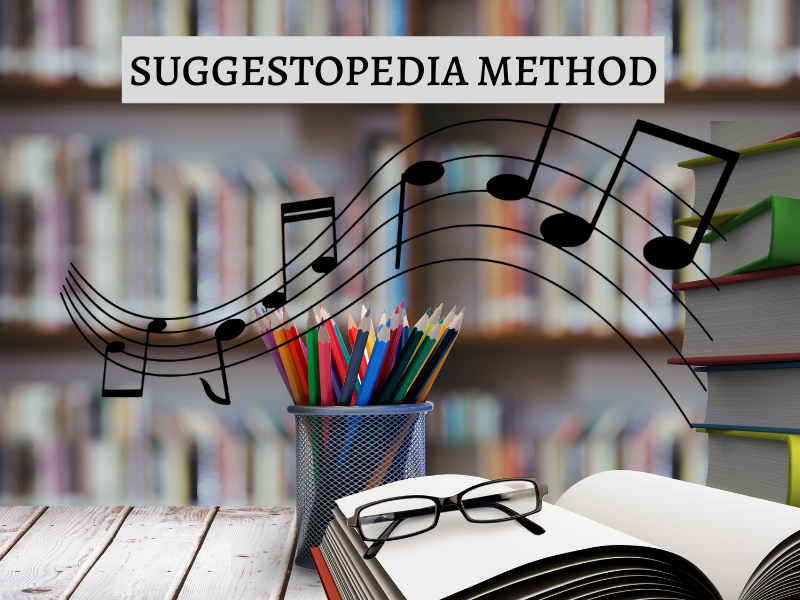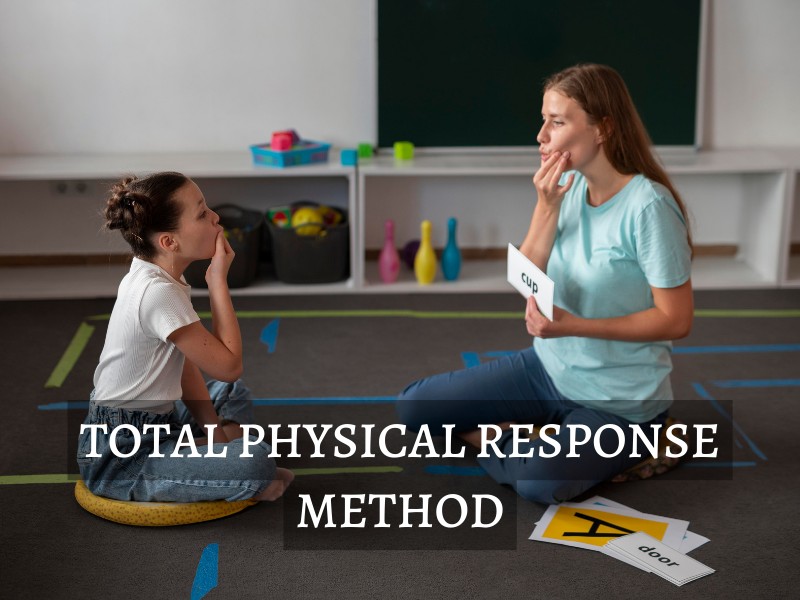Importance of Teaching the English Language
Over 1 billion people worldwide speak the English language. Teaching the English language is a complex task as it is a derivative of a variety of families of languages. Further, the grammatical rules and exceptions add to the complexity of the language. Indeed, being a global language, it is one of the most sought-after languages and is especially useful when the speakers don’t speak a common native language. For that reason, one also needs to constantly hone their language skills. If you wish to enhance your language skills, you can find many effective courses for English speaking and English writing online.

Understanding the Approach to Teaching the English Language
The way of teaching the English language nowadays has shifted from traditional classroom learning to more innovative and productive ways. This technique majorly depends on the kind of students and many other factors. Of course, it is essential that the teacher learns the various tried-and-tested methods of teaching the English language. They should understand the style of teaching that would suit the learners best.
Let’s have a look at the 10 most effective methods of teaching the English language –
1. Grammar – Translation Method
Also called the Classical method, this is the traditional way of classroom teaching the English language. In fact, it is the most popular method of teaching in South-East Asia.

Origin
Widely popular in schools in India, the method originated in the 16th century as a means to teach the Latin language. In this day and age, as a part of academia, we only use Latin as an ancient linguistic subject to learn. And yet, this traditional method of teaching the English language is still widely in use.
Characteristics
- The student learns the grammar theoretically and applies it while constructing his/her sentences.
- The base of understanding comes from translating sentences from the learner’s native language to English.
- The detailed study of grammar and vocabulary is given more priority over the content of the topic.
Advantages
- The main purpose of this method of teaching the English language is to read literature in the target language. Hence, the focus is on the translation of sentences from English to the native language to be able to understand what’s written better.
- As popularly seen in most schools in South-East Asia, the focus is on reading and writing.
- The teacher is at the center of this method and students derive all knowledge from them theoretically. Chiefly, the instructor’s way of teaching the English language is key.
- The vocabulary and grammar of the student increase as they learn.
Disadvantages
- There is no emphasis given to speaking and listening in English.
- The interaction in a classroom between the teacher and the student is in the native language. Hence, communicating and expressing themselves in English is not encouraged.
- Pronunciation and context are neglected.
2. Direct Method
In this approach to teaching the English language, the teacher creates a learning environment where they interact only in English. Likewise, people also call it the Natural way of learning a language.

Origin
The origin of this method dates back to the 1900s in Germany. In fact, the purpose of introducing this method was to shift from the shortcomings of the Grammar-Translation Method. To this end, the belief was that one should learn any foreign language in the same way as learning one’s mother tongue.
Characteristics
- The teacher works on creating a strict environment where everyone avoids speaking in their native languages.
- Foundationally, the focus of this method is on simple vocabulary through listening and speaking in English.
- The emphasis is on developing the habit of thinking and speaking in English.
- This habit form of learning is very similar to learning one’s mother tongue.
Advantages
- This method of teaching the English language encourages communication and discussions. This in turn results in better command of English as the students practice framing their own ideas into sentences during interactions.
- The oral technique of teaching ensures that there is an improvement in pronunciation and fluency in the language.
- The conversations can shift from simple to more complex needs of expression. This not only boosts language skills but also problem-solving skills.
- Active participation of the students is vital. Accordingly, this ensures that they are all involved and aware of their growth.
Disadvantages
- Since it is an oral method, reading and writing are not given enough importance.
- This method might not be suitable in all situations. Especially, slow language learners might find it difficult to adapt to learning in the direct method.
- The teaching style does not completely depend on bookish knowledge. Therefore, the success of the method majorly depends on the competency of the instructor teaching the English language.
3. Audio-Lingual Method
This method is very similar in comparison to the Direct Method where the students speak only English in classrooms. Critically, the difference in the way of teaching the English language is in the focus of learning. Foundationally, the emphasis is on the grammatical structuring of sentences more than the vocabulary. It involves a drilling routine of intensive listening and speaking in English.

Origin
During World War II, there was a necessity for the army to learn foreign languages at a faster pace for military purposes. With this in mind, the development of The Audio-Lingual method of teaching the English language took place.
Characteristics
- The teacher and students only interact in English.
- Actions, pictures, and realia are used to understand the meaning.
- The study is done through repetitive drills with a focus on the right usage of grammar.
Advantages
- Listening and speaking skills are developed well.
- The use of audio and visual materials for learning proves to be very effective.
- Students become competent in communication.
Disadvantages
- The method is highly dependent on the skills of the teacher.
- There is a possibility of vocabulary being neglected.
- The process might not be suitable for all learners.
4. Suggestopedia Method
The Suggestopedia method of teaching the English language works on the extensive usage of music to learn English. The introduction of factors like art and music in the classroom results in making the students feel calm, comfortable, and confident. Suggestopedia is indeed the most unorthodox way of teaching the English language. Naturally, a positive environment plays the most important role in the process of students learning the target language.

Origin
A Bulgarian educator, Georgi Lozanov developed this style of teaching the English language in the 1950s. He promoted positive suggestions with the use of a comfortable environment, a strong bond between the teacher and student, and the use of music.
Characteristics
There are different stages of the process –
- Deciphering – This is the theoretical learning stage of this method where the students are provided with study material.
- Concert Session – This stage is divided into two sessions with music being played in the background in both – active and passive sessions. In the active session, the teacher reads a text and the students follow. In the passive session, the students relax and listen to the teacher read.
- Elaboration – In this stage, the students use various forms of art like songs, games, and acting to express their understanding in the best way.
- Production – Not mandatorily used, the production stage is where the students freely interact with each other in the English language.
Advantages
- There is plenty of proof that the use of music in the background is useful while studying. This is evident, especially where there is a requirement for the students to concentrate and focus better.
- It is a fact that students learn better in environments that are more receptive and comfortable.
- The method has proven that acquisition has been six times faster than the traditional methods.
Disadvantages
- This technique of teaching the English language is not suitable for all learners. It is not effective for the ones who require a quiet atmosphere to learn better.
- The framework of the teaching principles requires the teachers to train and prepare a lot more when compared to other methods.
5. The Silent Method
This method of teaching the English language makes extensive use of silence to improve the learning experience of the students. The purpose of this way of teaching the English language is to develop creative, problem-solving, and self-sufficient skills in the students’ additional learning of the language.

Origin
The Egyptian educator, Caleb Gattegno, developed this language-teaching approach. He realized that the “teachers work with the students and students work with the language” approach is the right way of learning any foreign language.
Characteristics
- The teacher remains silent for the majority of the class. Primarily, the student is encouraged to speak and interact as much as possible in English.
- The focus is completely on complete active student participation.
- The expectation from the students is for them to make mistakes. Subsequently, the students work on correcting them either by themselves or by their peers.
- The teacher observes and only speaks to direct the students’ focus and to provide feedback.
Advantages
- This method makes the students self-reliant, autonomous, and responsible.
- The oral technique ensures improvement in pronunciation and fluency.
- It encourages interaction among students and learning from each other.
Disadvantages
- The method involves the risk of the student losing interest in learning due to the lack of involvement by the teacher.
- The teacher has to be extremely skilled to be able to teach without using the language much themselves.
6. Total Physical Response (TPR) Method
This technique of teaching the English language promotes learning through responding to verbal inputs. The method is very similar to how children learn their mother tongue. The focus is on listening and responding without any stress of learning.

Origin
The American professor, James Asher developed this language-teaching method. He observed how young children interacted verbally and physically with their parents and naturally learned their mother tongues.
Characteristics
- Teachers give instructions with physical actions and the students are expected to react with the right physical response.
- The students are exposed to extensive listening of the English language.
- Students are not forced to speak until it comes naturally to them.
Advantages
- TPR is suitable for mixed-ability classes and does not demand any specific level of aptitude.
- The process of learning is fun, memorable, and very effective.
Disadvantages
- The method is said to be useful only at beginner levels whereas it is not as effective at advanced levels of teaching the English language.
- The imperative tone can be misleading as the students might pick up on the tone the wrong way. They have the risk of sounding rude while conversing.
- The teacher has to be skilled enough to change the tone from being imperative at the beginning to leading conversations at higher levels.
7. Community Language Learning (CLL)
As the name suggests, this method of learning the English language is a community and group-based learning. It importantly emphasizes the students’ feelings and emotions in the process. This is why people call it the humanistic approach to teaching the English language. The focus of this method is to dissociate risk-taking from learning a new language and communicating effectively in the same.

Origin
Charles A Curran, a counseling specialist, observed that the major obstacles while learning a new language were anxiety and negative emotions of defense. Considering this, he developed Community Language Learning method to reduce these emotions in learners.
Characteristics
- The teacher acts as a language counselor and the student as a client.
- The teacher creates a community of students with a non-defensive environment. It assists to overcome the negative feelings associated with learning a new language.
- This community of students and the teacher becomes a safe space for learning as they interact with one another.
Advantages
- This way of learning the English language decreases the feeling of risk in learning.
- The main focus of this method is on group interest learning. So, the interactions among the students and with the teacher are very beneficial in developing confidence and fluency in the language.
- The students think independently of the teacher and decide the content of the conversations.
Disadvantages
- The teacher needs to be aware of which direction to guide the students in. The independence of the students could become a reason for the non-involvement of the teacher.
- Since more of an oral technique, the focus on reading and writing is less.
8. Communicative Language Teaching (CLT)
In this method of teaching the English language, the complete focus is on interactions. As a result, these interactions are both the means as well as the goals of the process. The purpose of this method is to prepare the students to become confident communicators in different social environments.

Origin
In the 1980s, there was an increasing demand for learning a second language. Due to this demand, the development of the Communicative Language Teaching method took place. Particularly, the goal was to shift the focus from achieving grammatical excellence to the overall development of the student’s communication skills.
Characteristics
- The students are encouraged to interact with each other in English through activities like discussions, role-playing, and other collaborative tasks.
- Teachers are not part of the activity. Instead, they focus on providing a supportive environment for the students to interact better.
- The approach of teaching the English language also integrates reading and writing with speaking and listening.
Advantages
- The method is student-oriented and is based on their needs and interests.
- Since the core of the method is activity-based, students are better invested.
- Learning English as a tool to communicate serves the purpose of the method well.
Disadvantages
- Since the focus is more on fluency than accuracy, the need to learn English for professional purposes sometimes is not met.
- The context of the atmosphere is not paid attention to.
- The method depends highly on the teacher and their understanding. On account of this, the teacher may understand the student well but native English speakers might not.
9. Task-Based Language Method
This method of teaching the English language promotes learning based on involving the students in interactive and meaningful tasks. Here, communication is the key to these tasks. Essentially, the purpose of this method is to prepare the students for real-world situations.

Origin
This method stemmed from the Communicative Language Teaching method (CLT). The creation of this subcategory is to focus completely to develop the capacity for learning. N.S. Prabhu from the Bangalore Project applied it and observed the effectiveness of the method. According to his observation, his students learned a second language with as much ease as one would learn their native language.
Characteristics
- The teacher creates an environment where students interact strictly in the English language.
- The teacher gives the students tasks in the form of communicative activities. For the best results, these tasks are mostly performed in small groups.
- The tasks can be information, reasoning, or opinion-stimulating.
- The teacher plays the role of an observer or counselor in this scenario. Following this, they review the language performances of the students at the end of the task.
Advantages
- Students feel motivated in the active environment to participate in task-based learning.
- The interaction builds a strong relationship between the students which can trigger meaningful conversations. This can further help them to express themselves better in English.
- The tasks encourage the students to use their knowledge, reasoning, and opinions, adding to their overall personality.
Disadvantages
- Similar to CLT, task-based interactions can end up focusing more on the tasks and neglecting the grammatical fluency one wishes to achieve.
- Some believe that there should be more to a conversation than performing tasks in this approach of teaching the English language.
10. Lexical Approach to Teaching
The Lexical approach to teaching the English language focuses on the idea that learning phrases are the most important factor. In brief, the process is to learn the lexis and then form phrases as meaningful chunks.

Origin
Renowned author, Michael Lewis, developed the Lexical approach in the early 1990s as he advocated the use of word grammar. The objective of his findings is to stop assigning meanings to single words as it is simpler to understand lexical items and phrases.
Characteristics
- Students are taught multiple-word grammar as the most important part.
- Successful communication is given priority over grammatical fluency.
- Students learn by intensive reading, writing, and listening.
- The context of whole sentences is broken down, translated, and understood in smaller chunks.
- Lexical chunks and collocations such as sentence heads and polywords are learned.
Advantages
- Communication skills are improved.
- Students understand patterns of different languages better.
- This method increases language awareness.
- The understanding of lexical phrases provides flexibility.
Disadvantages
- The idea that a language can be learned with only phrases is too simplified.
- The teacher is required to be well-trained and prepared before every session.
Conclusion
Mentioned above is a brief of some of the most effective techniques for teaching the English language. As a teacher, one has to understand which method suits their student and classroom the best. The demand for learning this language is increasing every day. Simultaneously, the demand for teachers who can effectively teach the English language is also increasing. Basically, when there is demand, the competition also rises. Having the right training in teaching through different methods can not only help gain an upper hand in the competition but also do justice to the students by ensuring they learn English in the best suitable way for them.
Recommended Courses for Improving your English Langauge Fluency
If you are looking to enhance your English language skills, the below-mentioned courses, offered by the reputed Henry Harvin Academy, are the most suitable ones available online –

English Speaking Course
With 6 levels of 40-50 hours each, this course is designed to be suitable for anyone looking to improve their English language skills. Be it for becoming a confident public speaker or starting a career as an English teacher, the curriculum offers an array of topics organized to help you learn better and faster. Though a speaking course, it will also shed light on all aspects of learning English for your progress.
Why Choose this course?
- You will be fluent, and confident and speak perfect English in no time.
- Learn the advanced level of English grammar.
- Prepare yourself for International English exams.
- Become able to easily communicate and understand ideas, concepts, and topics in English.
- Express yourself better among your peers and native speakers.
- Participate in discussions and talk about trending topics on public platforms and forums.
English Writing Course
With 5 levels of 40-50 hours each, this course will help you improve your English writing by building the right skills required for academic, professional, or personal use. From basic English concepts like simple sentence formations to complex texts and speeches like writing long-form content, this course is perfect to learn your A-Z of writing in English.
Why choose this Course?
- In a short time, develop the ability to write in flawless and fluent English.
- Learn advanced English grammar.
- Prepare well for International English Writing Language Exams.
- Easily write, and comprehend ideas, concepts, and topics.
- Express yourself better among your peers and native English speakers.
- Participate in discussions about trending topics in forums and public platforms.
Why choose Henry Harvin for your English language courses?
Along with getting the opportunity to be trained by the best of the industry with over 12 years of experience, the English courses are a complete package of 9-in-1 features. That is it offers 9 benefits in one course. You will be –
- Attending live online interactive sessions for all levels.
- Provided with several projects to work on, such as writing blogs, social media posts, writing emails, etc.
- Assisted to land an internship to further work on your skills.
- Get a Hallmarked Certification of the English Writing Course from Henry Harvin which is recognized by the Govt. of India.
- Get guaranteed opportunities for 100% placement for 1-year post successful completion.
- Get access to many tools and techniques, video content, etc.
- Get access to 52+ masterclasses for the development of your soft skills.
- Free access to several Hackathons and competitions.
- Get a 1-year Gold membership with Henry Harvin Language Academy for the English Speaking Course.
You can further explore the Academy and the English language courses on their official website.
Recommended Reads
- Top 10 Online TEFL Certification Courses – 2022
- Top 18 Foreign Language Courses in India
- Top 10 German Language Courses Online
Frequently Asked Questions
The most effective method highly depends on the type of students one is teaching. It can be either one of the methods mentioned above or a combination of a few methods.
Yes. English is the language of International business. At present, the demand for English teachers is at its peak considering the global importance of learning English.
The English teacher should possess the following characteristics – thorough knowledge of the English language, understanding of students’ needs, empathy, and patience.
You can find a variety of English courses online. Furthermore, you need to practice listening, reading, writing, and speaking as much as possible.
English is a global language. By teaching it, you can help people increase their possibilities of travel and employment anywhere in the world














